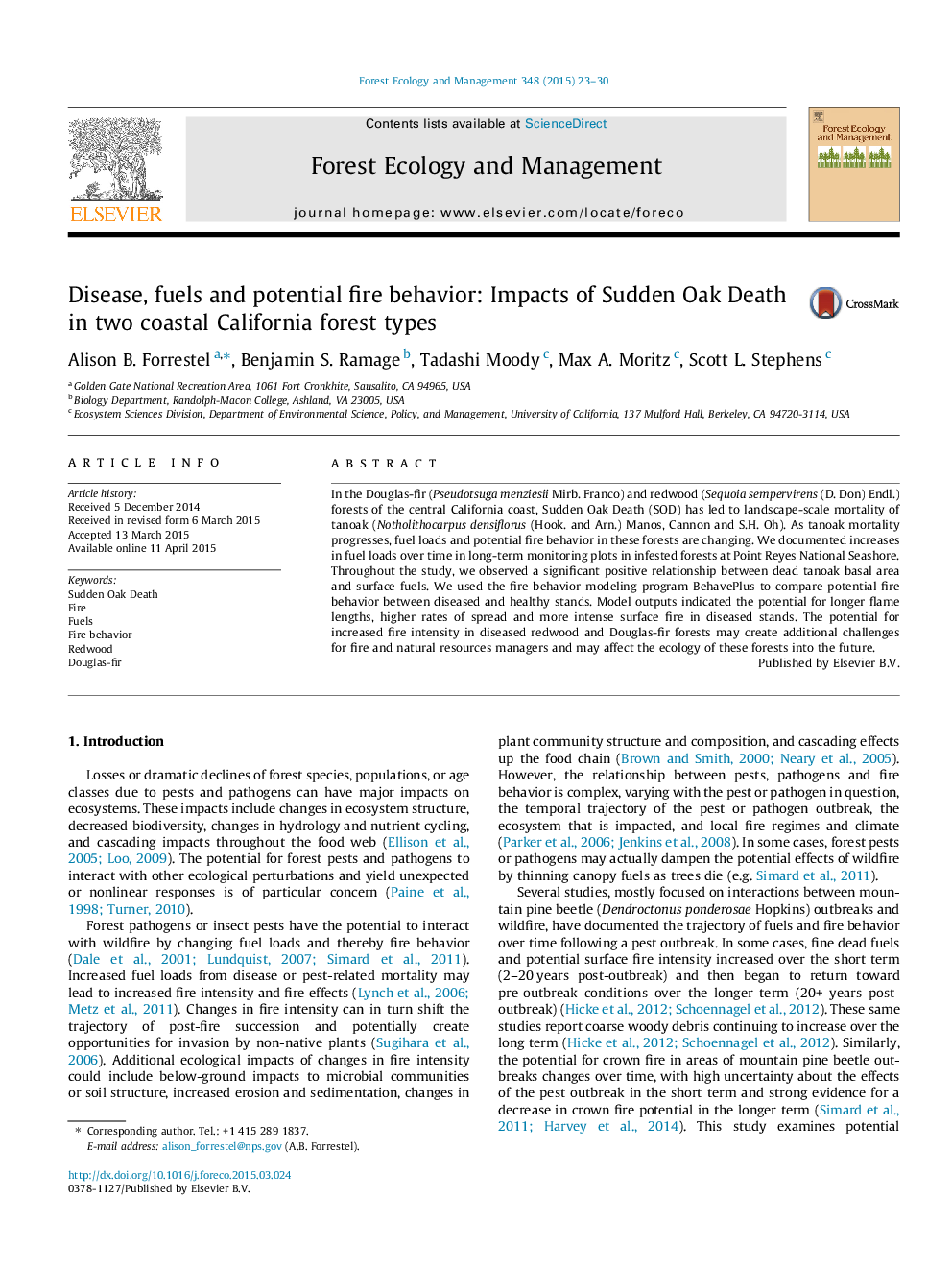| Article ID | Journal | Published Year | Pages | File Type |
|---|---|---|---|---|
| 6542742 | Forest Ecology and Management | 2015 | 8 Pages |
Abstract
In the Douglas-fir (Pseudotsuga menziesii Mirb. Franco) and redwood (Sequoia sempervirens (D. Don) Endl.) forests of the central California coast, Sudden Oak Death (SOD) has led to landscape-scale mortality of tanoak (Notholithocarpus densiflorus (Hook. and Arn.) Manos, Cannon and S.H. Oh). As tanoak mortality progresses, fuel loads and potential fire behavior in these forests are changing. We documented increases in fuel loads over time in long-term monitoring plots in infested forests at Point Reyes National Seashore. Throughout the study, we observed a significant positive relationship between dead tanoak basal area and surface fuels. We used the fire behavior modeling program BehavePlus to compare potential fire behavior between diseased and healthy stands. Model outputs indicated the potential for longer flame lengths, higher rates of spread and more intense surface fire in diseased stands. The potential for increased fire intensity in diseased redwood and Douglas-fir forests may create additional challenges for fire and natural resources managers and may affect the ecology of these forests into the future.
Related Topics
Life Sciences
Agricultural and Biological Sciences
Ecology, Evolution, Behavior and Systematics
Authors
Alison B. Forrestel, Benjamin S. Ramage, Tadashi Moody, Max A. Moritz, Scott L. Stephens,
